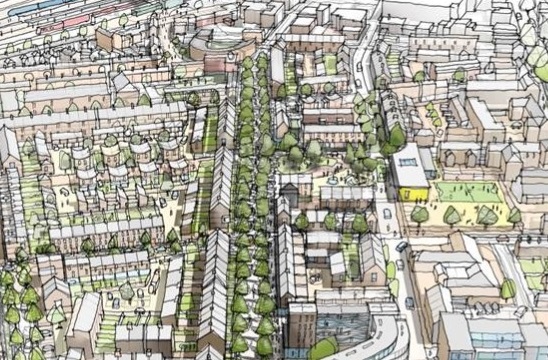BREEAM launches local planning authority guidance

|
The BREEAM Family of schemes supports and adds value to the activities of a range of stakeholders worldwide, including:
- Central government delivering on policy;
- Market players actively committed to Corporate Social Responsibility (CSR) and good Environment Social Governance (ESG), and
- The financial investment sector managing risks.
Within the UK, the schemes also support local government through development specifications and the planning system.
Over the past few years, proactive engagement activities with this latter group – local planning authorities as well as their representative groups and bodies – has sought to demystify the applicability of certification and empower practitioners to the drive better sustainability outcomes in what is an ever-evolving policy landscape.
Following the release of the revised National Planning Policy Framework (NPPF, 2018); the central reference point for plan making in England, and joint pieces with both the UKGBC and TCPA/RTPI (policy playbook and climate resilience practitioners guide), BREEAM acted to update its own planning guidance working with its assessor networks and planning representatives to define the brief and refresh the best practice knowledge.
This has resulted in a dedicated BREEAM Planning resource suite specifically for local government and planning authorities which currently contains six documents:
- Planning Practitioner Guidance – principles, policy writing, ratings, and industry examples.
- The Value Case – providing a compilation of the key value messages.
- Communities and CEEQUAL Uncovered – context, scope, minimum standards, stakeholder value and uptake.
- UK New Construction Uncovered.
- Home Quality Mark Uncovered.
- Top ten questions – addressing FAQs from local authorities, planners and other stakeholders.
These are intended to be ‘living resources’ which will be added to and evolved over time. The current intention is to include resource packs for the Refurbishment and Fit-Out and In-Use BREEAM schemes and build upon the application approval/determination insight.
BREEAM will be monitoring feedback, hits/downloads etc. and has partnered with the TCPA, and is working with the RTPI, to deliver a series of engagement workshops for planning practitioners. These will disseminate best practice, particularly in respect to positive climate change and public health action and the use of certification, and help shape the brief for the second update phase.
It is also envisaged that further guidance will be brought forward for those acting within the scheme's wider stakeholder network – watch this space. Readers are encouraged to contact BREEAM with their thoughts and suggestions at [mailto:breeam@bregroup.com breeam@bregroup.com].
This article was written by BREEAM in May 2019 and can be accessed on its website here.
[edit] Related articles on Designing Buildings Wiki
Featured articles and news
RTPI leader to become new CIOB Chief Executive Officer
Dr Victoria Hills MRTPI, FICE to take over after Caroline Gumble’s departure.
Social and affordable housing, a long term plan for delivery
The “Delivering a Decade of Renewal for Social and Affordable Housing” strategy sets out future path.
A change to adoptive architecture
Effects of global weather warming on architectural detailing, material choice and human interaction.
The proposed publicly owned and backed subsidiary of Homes England, to facilitate new homes.
How big is the problem and what can we do to mitigate the effects?
Overheating guidance and tools for building designers
A number of cool guides to help with the heat.
The UK's Modern Industrial Strategy: A 10 year plan
Previous consultation criticism, current key elements and general support with some persisting reservations.
Building Safety Regulator reforms
New roles, new staff and a new fast track service pave the way for a single construction regulator.
Architectural Technologist CPDs and Communications
CIAT CPD… and how you can do it!
Cooling centres and cool spaces
Managing extreme heat in cities by directing the public to places for heat stress relief and water sources.
Winter gardens: A brief history and warm variations
Extending the season with glass in different forms and terms.
Restoring Great Yarmouth's Winter Gardens
Transforming one of the least sustainable constructions imaginable.
Construction Skills Mission Board launch sector drive
Newly formed government and industry collaboration set strategy for recruiting an additional 100,000 construction workers a year.
New Architects Code comes into effect in September 2025
ARB Architects Code of Conduct and Practice available with ongoing consultation regarding guidance.
Welsh Skills Body (Medr) launches ambitious plan
The new skills body brings together funding and regulation of tertiary education and research for the devolved nation.
Paul Gandy FCIOB announced as next CIOB President
Former Tilbury Douglas CEO takes helm.
UK Infrastructure: A 10 Year Strategy. In brief with reactions
With the National Infrastructure and Service Transformation Authority (NISTA).























